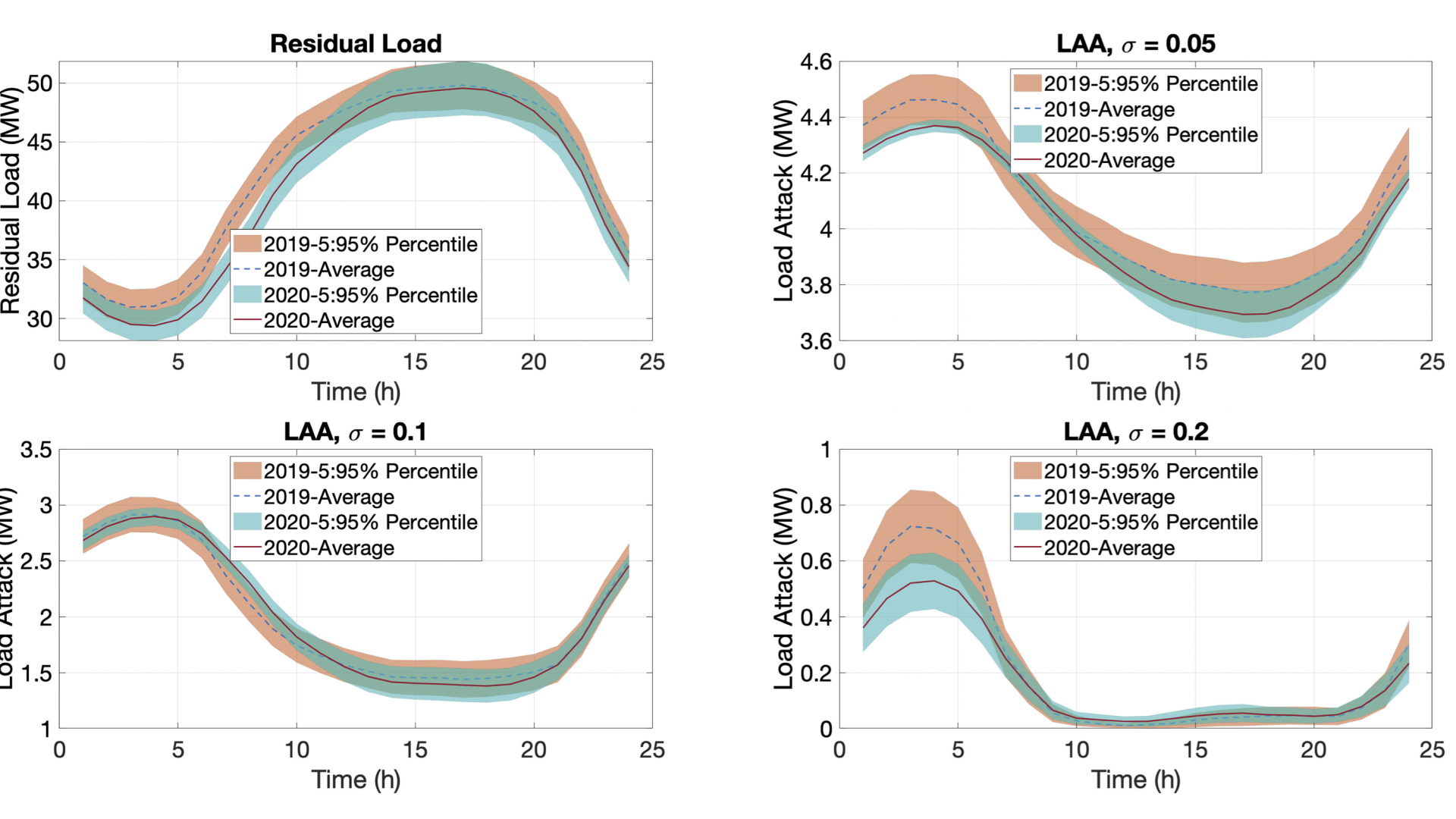Load-Altering Attacks Against Power Grids under COVID-19 Low-Inertia Conditions: The COVID-19 pandemic has impacted our society by forcing shutdowns and shifting the way people interacted worldwide. In relation to the impacts on the electric grid, it created a significant decrease in energy demands across the globe. Recent studies have shown that the low demand conditions caused by COVID-19 lockdowns combined with large renewable generation have resulted in extremely low-inertia grid conditions. In our work, in collaboration with Subhash Lakshminarayana, University of Warwick, UK, and Juan Ospina, Los Alamos National Laboratory, Los Alamos, NM, USA, we examine how an attacker could exploit these scenarios to cause unsafe grid operating conditions by executing load-altering attacks (LAAs) targeted at compromising hundreds of thousands of IoT-connected high-wattage loads in low-inertia power systems. Our study focuses on analyzing the impact of the COVID-19 mitigation measures on U.S. regional transmission operators (RTOs), formulating a plausible and realistic least-effort LAA targeted at transmission systems with low-inertia conditions, and evaluating the probability of these large-scale LAAs. Theoretical and simulation results are presented based on the WSCC 9-bus and IEEE 118-bus test systems. Results demonstrate how adversaries could provoke major frequency disturbances by targeting vulnerable load buses in low-inertia systems and offer insights into how the temporal fluctuations of renewable energy sources, considering generation scheduling, impact the grid's vulnerability to LAAs.
Postprint available: KAUST Repository & IEEEXplore

